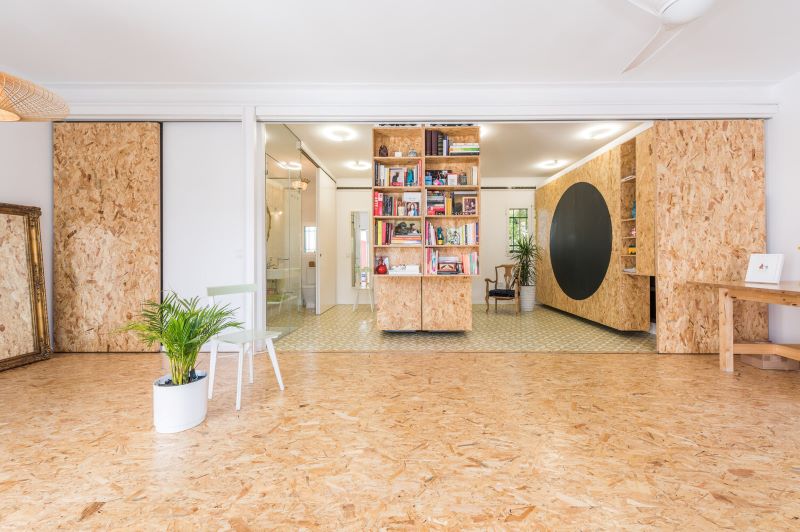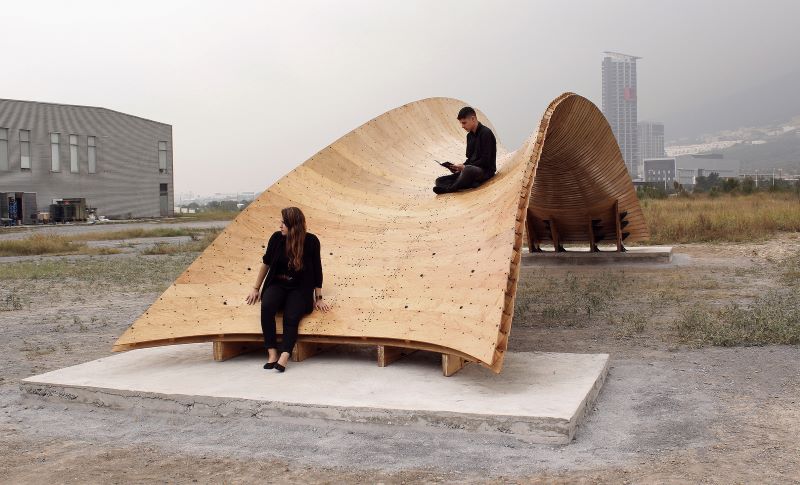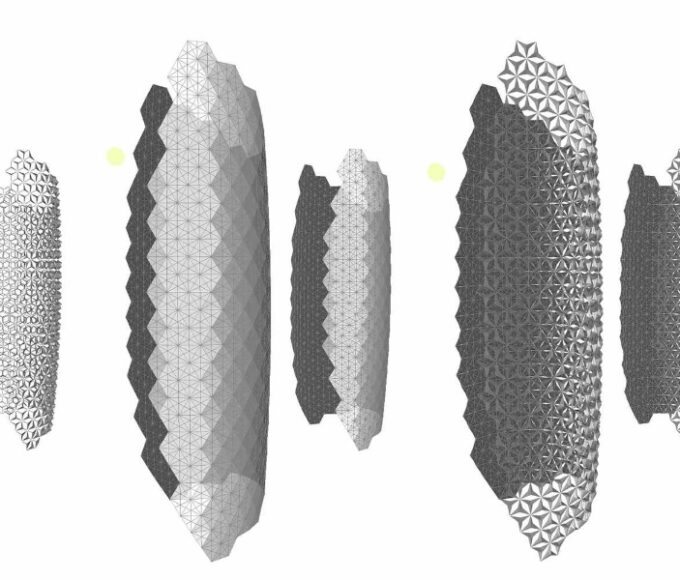Wood, one of the oldest building materials, has been continuously renovated and reshaped throughout history. As contemporary architecture places greater emphasis on sustainability and environmental responsibility, the popularity of this material has been on the rise.
Trees absorb carbon dioxide as they grow, and the wood can store this carbon, preventing its release into the atmosphere. Thus, when trees come from sustainably managed forests, materials derived from wood generate relatively fewer greenhouse gas emissions. To fully unlock the potential of this material, various technologies and improvement methods have been developed to adapt wood’s properties to meet the demands of modern design and construction.
Engineered Wood: Lamination and Gluing
Engineered wood is a broad category referring to building materials made by bonding wood particle layers together using adhesives and advanced manufacturing processes. These processes aim to optimize the material’s strength, stability, and dimensional consistency while enabling the creation of large structural components using relatively small trees. Some common types of laminates, often called “heavy timber structures,” include Glued Laminated Wood (Glulam), Cross-Laminated Timber (CLT), and Laminated Veneer Lumber (LVL).
The structural properties of these materials depend on the manufacturing process. Glulam is made by bonding individual wood segments with industrial adhesives. Due to the consistent direction of wood fibers, it is most suitable for large structural components such as beams or columns. On the other hand, CLT consists of sawn and glued wood panels, with each layer oriented perpendicular to the previous one. This gives it structural rigidity in two directions, similar to plywood but with thicker components. CLT panels can be adjusted in thickness and size during the prefabrication stage and used as structural walls, floors, furniture, ceilings, and roofs. LVL is made by combining thin veneer layers in the same grain direction. It has similar uses to Glulam but offers higher performance, allowing for smaller cross-sections compared to softwood Glulam.
Pressure and Heat Treatment
Thermal modification is a wood treatment process where wood is placed in a kiln and exposed to high temperatures, reducing its moisture content to nearly 0%. This process removes both bound and free water within wood cells, minimizing wood deformation and stabilizing its structure. Steam is then applied to raise the humidity back to 4%-7%, ensuring the wood remains usable. Compared to untreated wood, Thermally Modified Timber (TMT) offers greater stability and moisture resistance, lowering the risk of cracking and warping while preserving its natural appearance.
Pressure treatment technology is used to force wood preservatives or flame retardants into the internal structure of wood. This treatment extends the wood’s service life by protecting it from wood-boring insects and fungal decay. Additionally, flame retardant treatment enhances the wood’s applicability by reducing smoke and flame production during fires. Its applications range from indoor framing structures to wood exposed to outdoor environments, including utility poles, railroad ties, decking, and fence slats.
Wood Particle Aggregation
Wood particle boards are among the most versatile and widely used building materials, often employed as wall coverings, furniture, ceilings, and even flooring. They are made by bonding wood fibers, particles, or chips together with adhesives and resins to form rigid panels. The properties of the panels vary depending on the type of aggregate (i.e., filling materials like wood particles) and adhesives used.
Oriented Strand Board (OSB) is known for its strength and cost-effectiveness. While OSB panels are most commonly used as structural sheathing in many hidden layers of buildings, many designers have begun to explore their potential in interior design. Medium-Density Fiberboard (MDF) features a smooth surface, making it the material of choice in the woodworking industry. Medium-Density Particleboard (MDP), on the other hand, is made by mixing wood dust such as sawdust with resin, providing a more cost-effective solution. Plywood is manufactured using a process similar to CLT but on a different scale; it is made by vertically interleaving and bonding wood veneers, followed by hot pressing.

Surface Treatment
A variety of surface treatment processes can be applied to wood to enhance its appearance, durability, and protective properties. Common wood surface treatments include painting, staining, varnishing, coating with film-forming finishes, and oil-wax treatments. While some of these methods rely on modern materials, traditional folk techniques also contribute to extending wood’s service life. The Japanese charring process is one such example. With a history of over 300 years, this technique involves burning the surface layer of wood to form a charred protective layer, shielding the internal structure of the wood from termites, fungi, and other natural elements.
Bending
Most wooden structures and wood applications in construction involve processing wood into straight components such as beams and flat panels. However, wood itself possesses elasticity, a property that can be tapped into and enhanced through various techniques. Steam bending is one of the early applied methods; for instance, German craftsman Michael Thonet pioneered this technique in the early 19th century, and the furniture he designed remains popular to this day. Glued Laminated Wood technology enables shape variation by bonding wooden strips to a mold with the desired curvature, taking into account the limitations of wood’s material properties and making it possible to manufacture large components suitable for construction. On the other hand, the Kerf Cut method offers greater flexibility but also reduces the structural strength of the formed components.

Modern latest technology has significantly transformed wood’s potential as a building material, addressing traditional limitations while leveraging its sustainable advantages. Together, these advancements not only reinforce wood’s role as an eco-friendly choice but also elevate it to meet the rigorous demands of contemporary architecture, expanding its application scope to unprecedented heights.












